

American Identities: A New Look, September 12, 2001 through February 28, 2016 (Image: DIG_E2006_American_Identitites_Evolution_of_Negro_Political_Costume_2005.58a-c_PS2.jpg Brooklyn Museum photograph, 2006)
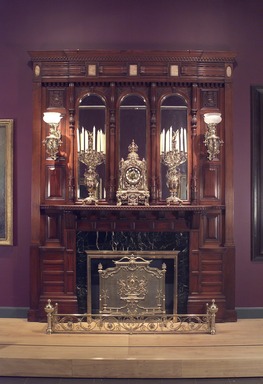
American Identities: A New Look, September 12, 2001 through February 28, 2016 (Image: DIG_E_2003_American_01_PS2.jpg Brooklyn Museum photograph, 2006)

American Identities: A New Look, September 12, 2001 through February 28, 2016 (Image: DIG_E_2007_American_01_SL1.jpg Brooklyn Museum photograph, 2006)

American Identities: A New Look, September 12, 2001 through February 28, 2016 (Image: DIG_E_2009_American_01_PS2.jpg Brooklyn Museum photograph, 2006)

American Identities: A New Look, September 12, 2001 through February 28, 2016 (Image: DIG_E_2009_American_02_PS2.jpg Brooklyn Museum photograph, 2006)

American Identities: A New Look, September 12, 2001 through February 28, 2016 (Image: DIG_E_2009_American_03_PS2.jpg Brooklyn Museum photograph, 2006)

American Identities: A New Look, September 12, 2001 through February 28, 2016 (Image: DIG_E_2009_American_04_PS2.jpg Brooklyn Museum photograph, 2006)

American Identities: A New Look, September 12, 2001 through February 28, 2016 (Image: DIG_E_2009_American_05_PS2.jpg Brooklyn Museum photograph, 2006)
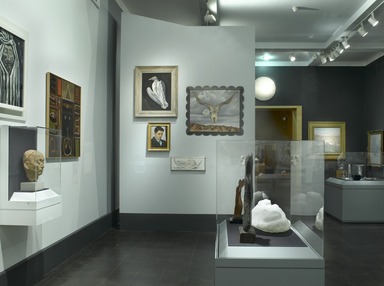
American Identities: A New Look, September 12, 2001 through February 28, 2016 (Image: DIG_E_2009_American_06_PS2.jpg Brooklyn Museum photograph, 2006)

American Identities: A New Look, September 12, 2001 through February 28, 2016 (Image: DIG_E_2009_American_07_PS2.jpg Brooklyn Museum photograph, 2006)

American Identities: A New Look, September 12, 2001 through February 28, 2016 (Image: DIG_E_2009_American_08_PS2.jpg Brooklyn Museum photograph, 2006)
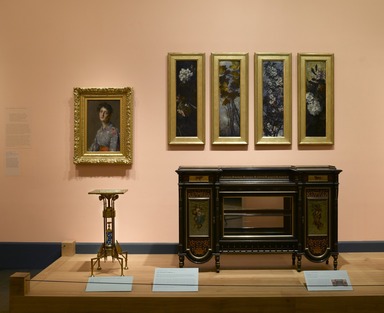
American Identities: A New Look, September 12, 2001 through February 28, 2016 (Image: DIG_E_2009_American_09_PS2.jpg Brooklyn Museum photograph, 2006)

American Identities: A New Look, September 12, 2001 through February 28, 2016 (Image: DIG_E_2009_American_10_PS2.jpg Brooklyn Museum photograph, 2006)

American Identities: A New Look, September 12, 2001 through February 28, 2016 (Image: DIG_E_2009_American_11_PS2.jpg Brooklyn Museum photograph, 2006)

American Identities: A New Look, September 12, 2001 through February 28, 2016 (Image: DIG_E_2009_American_12_PS2.jpg Brooklyn Museum photograph, 2006)

American Identities: A New Look, September 12, 2001 through February 28, 2016 (Image: PSC_E2001i116.jpg Brooklyn Museum photograph, 2006)
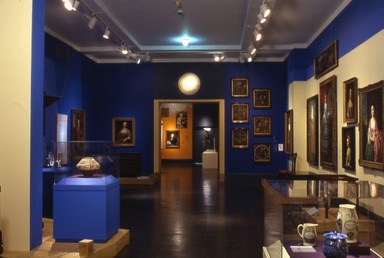
American Identities: A New Look, September 12, 2001 through February 28, 2016 (Image: PSC_E2001i117.jpg Brooklyn Museum photograph, 2006)

American Identities: A New Look, September 12, 2001 through February 28, 2016 (Image: PSC_E2001i118.jpg Brooklyn Museum photograph, 2006)

American Identities: A New Look, September 12, 2001 through February 28, 2016 (Image: PSC_E2001i119.jpg Brooklyn Museum photograph, 2006)

American Identities: A New Look, September 12, 2001 through February 28, 2016 (Image: PSC_E2001i120.jpg Brooklyn Museum photograph, 2006)

American Identities: A New Look, September 12, 2001 through February 28, 2016 (Image: PSC_E2001i121.jpg Brooklyn Museum photograph, 2006)

American Identities: A New Look, September 12, 2001 through February 28, 2016 (Image: PSC_E2001i122.jpg Brooklyn Museum photograph, 2006)

American Identities: A New Look, September 12, 2001 through February 28, 2016 (Image: PSC_E2001i123.jpg Brooklyn Museum photograph, 2006)

American Identities: A New Look, September 12, 2001 through February 28, 2016 (Image: PSC_E2001i124.jpg Brooklyn Museum photograph, 2006)
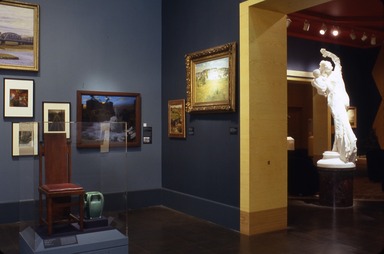
American Identities: A New Look, September 12, 2001 through February 28, 2016 (Image: PSC_E2001i125.jpg Brooklyn Museum photograph, 2006)

American Identities: A New Look, September 12, 2001 through February 28, 2016 (Image: PSC_E2001i126.jpg Brooklyn Museum photograph, 2006)
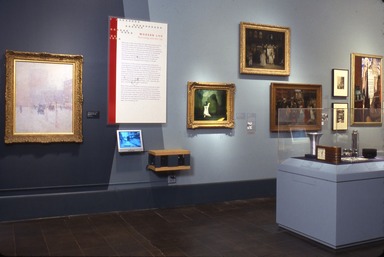
American Identities: A New Look, September 12, 2001 through February 28, 2016 (Image: PSC_E2001i127.jpg Brooklyn Museum photograph, 2006)

American Identities: A New Look, September 12, 2001 through February 28, 2016 (Image: PSC_E2001i128.jpg Brooklyn Museum photograph, 2006)

American Identities: A New Look, September 12, 2001 through February 28, 2016 (Image: PSC_E2001i129.jpg Brooklyn Museum photograph, 2006)

American Identities: A New Look, September 12, 2001 through February 28, 2016 (Image: PSC_E2001i130.jpg Brooklyn Museum photograph, 2006)

American Identities: A New Look, September 12, 2001 through February 28, 2016 (Image: PSC_E2001i131.jpg Brooklyn Museum photograph, 2006)

American Identities: A New Look, September 12, 2001 through February 28, 2016 (Image: PSC_E2001i132.jpg Brooklyn Museum photograph, 2006)
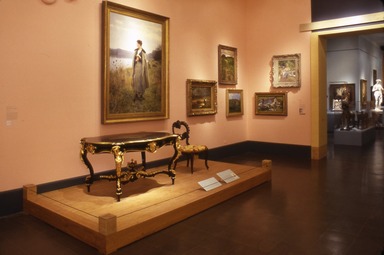
American Identities: A New Look, September 12, 2001 through February 28, 2016 (Image: PSC_E2001i133.jpg Brooklyn Museum photograph, 2006)
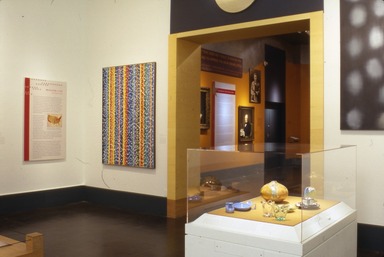
American Identities: A New Look, September 12, 2001 through February 28, 2016 (Image: PSC_E2001i134.jpg Brooklyn Museum photograph, 2006)

American Identities: A New Look, September 12, 2001 through February 28, 2016 (Image: PSC_E2001i135.jpg Brooklyn Museum photograph, 2006)
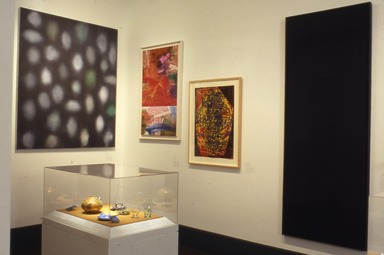
American Identities: A New Look, September 12, 2001 through February 28, 2016 (Image: PSC_E2001i136.jpg Brooklyn Museum photograph, 2006)

American Identities: A New Look, September 12, 2001 through February 28, 2016 (Image: PSC_E2001i137.jpg Brooklyn Museum photograph, 2006)

American Identities: A New Look, September 12, 2001 through February 28, 2016 (Image: PSC_E2001i138.jpg Brooklyn Museum photograph, 2006)

American Identities: A New Look, September 12, 2001 through February 28, 2016 (Image: PSC_E2001i139.jpg Brooklyn Museum photograph, 2006)

American Identities: A New Look, September 12, 2001 through February 28, 2016 (Image: PSC_E2001i140.jpg Brooklyn Museum photograph, 2006)

American Identities: A New Look, September 12, 2001 through February 28, 2016 (Image: PSC_E2001i141.jpg Brooklyn Museum photograph, 2006)

American Identities: A New Look, September 12, 2001 through February 28, 2016 (Image: PSC_E2001i142.jpg Brooklyn Museum photograph, 2006)
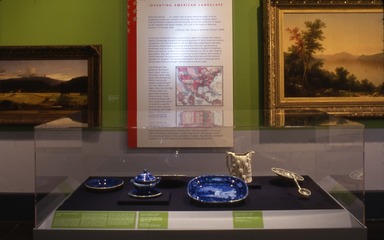
American Identities: A New Look, September 12, 2001 through February 28, 2016 (Image: PSC_E2001i143.jpg Brooklyn Museum photograph, 2006)
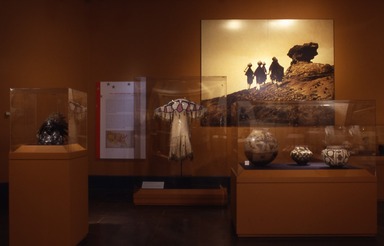
American Identities: A New Look, September 12, 2001 through February 28, 2016 (Image: PSC_E2001i144.jpg Brooklyn Museum photograph, 2006)

American Identities: A New Look, September 12, 2001 through February 28, 2016 (Image: PSC_E2001i145.jpg Brooklyn Museum photograph, 2006)
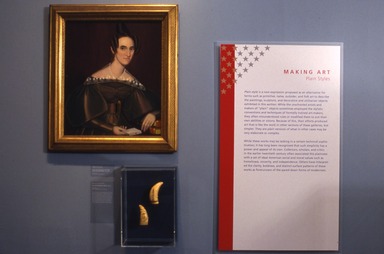
American Identities: A New Look, September 12, 2001 through February 28, 2016 (Image: PSC_E2001i146.jpg Brooklyn Museum photograph, 2006)

American Identities: A New Look, September 12, 2001 through February 28, 2016 (Image: PSC_E2001i147.jpg Brooklyn Museum photograph, 2006)

American Identities: A New Look, September 12, 2001 through February 28, 2016 (Image: PSC_E2001i148.jpg Brooklyn Museum photograph, 2006)

American Identities: A New Look, September 12, 2001 through February 28, 2016 (Image: PSC_E2001i149.jpg Brooklyn Museum photograph, 2006)

American Identities: A New Look, September 12, 2001 through February 28, 2016 (Image: PSC_E2001i150.jpg Brooklyn Museum photograph, 2006)

American Identities: A New Look, September 12, 2001 through February 28, 2016 (Image: PSC_E2001i151.jpg Brooklyn Museum photograph, 2006)

American Identities: A New Look, September 12, 2001 through February 28, 2016 (Image: PSC_E2001i152.jpg Brooklyn Museum photograph, 2006)

American Identities: A New Look, September 12, 2001 through February 28, 2016 (Image: PSC_E2001i153.jpg Brooklyn Museum photograph, 2006)

American Identities: A New Look, September 12, 2001 through February 28, 2016 (Image: PSC_E2001i154.jpg Brooklyn Museum photograph, 2006)

American Identities: A New Look, September 12, 2001 through February 28, 2016 (Image: PSC_E2001i155.jpg Brooklyn Museum photograph, 2006)

American Identities: A New Look, September 12, 2001 through February 28, 2016 (Image: PSC_E2001i156.jpg Brooklyn Museum photograph, 2006)

American Identities: A New Look, September 12, 2001 through February 28, 2016 (Image: PSC_E2001i157.jpg Brooklyn Museum photograph, 2006)

American Identities: A New Look, September 12, 2001 through February 28, 2016 (Image: PSC_E2001i158.jpg Brooklyn Museum photograph, 2006)

American Identities: A New Look, September 12, 2001 through February 28, 2016 (Image: PSC_E2001i159.jpg Brooklyn Museum photograph, 2006)

American Identities: A New Look, September 12, 2001 through February 28, 2016 (Image: PSC_E2001i160.jpg Brooklyn Museum photograph, 2006)

American Identities: A New Look, September 12, 2001 through February 28, 2016 (Image: PSC_E2001i161.jpg Brooklyn Museum photograph, 2006)

American Identities: A New Look, September 12, 2001 through February 28, 2016 (Image: PSC_E2001i162.jpg Brooklyn Museum photograph, 2006)

American Identities: A New Look, September 12, 2001 through February 28, 2016 (Image: PSC_E2001i163.jpg Brooklyn Museum photograph, 2006)
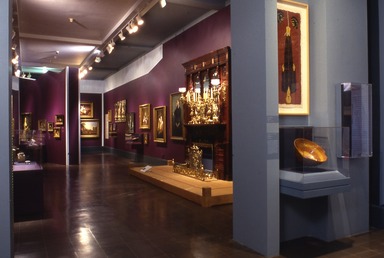
American Identities: A New Look, September 12, 2001 through February 28, 2016 (Image: PSC_E2001i164.jpg Brooklyn Museum photograph, 2006)

American Identities: A New Look, September 12, 2001 through February 28, 2016 (Image: PSC_E2001i165.jpg Brooklyn Museum photograph, 2006)

American Identities: A New Look, September 12, 2001 through February 28, 2016 (Image: PSC_E2001i166.jpg Brooklyn Museum photograph, 2006)

American Identities: A New Look, September 12, 2001 through February 28, 2016 (Image: PSC_E2001i167.jpg Brooklyn Museum photograph, 2006)

American Identities: A New Look, September 12, 2001 through February 28, 2016 (Image: PSC_E2001i168.jpg Brooklyn Museum photograph, 2006)

American Identities: A New Look, September 12, 2001 through February 28, 2016 (Image: PSC_E2001i169.jpg Brooklyn Museum photograph, 2006)

American Identities: A New Look, September 12, 2001 through February 28, 2016 (Image: PSC_E2001i170.jpg Brooklyn Museum photograph, 2006)

American Identities: A New Look, September 12, 2001 through February 28, 2016 (Image: PSC_E2001i171.jpg Brooklyn Museum photograph, 2006)

American Identities: A New Look, September 12, 2001 through February 28, 2016 (Image: PSC_E2001i172.jpg Brooklyn Museum photograph, 2006)

American Identities: A New Look, September 12, 2001 through February 28, 2016 (Image: PSC_E2001i173.jpg Brooklyn Museum photograph, 2006)

American Identities: A New Look, September 12, 2001 through February 28, 2016 (Image: PSC_E2001i174.jpg Brooklyn Museum photograph, 2006)

American Identities: A New Look, September 12, 2001 through February 28, 2016 (Image: PSC_E2001i175.jpg Brooklyn Museum photograph, 2006)

American Identities: A New Look, September 12, 2001 through February 28, 2016 (Image: PSC_E2001i176.jpg Brooklyn Museum photograph, 2006)
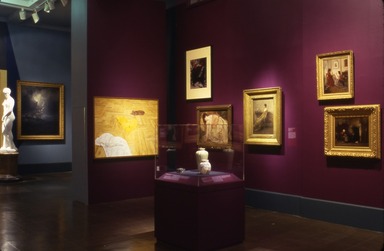
American Identities: A New Look, September 12, 2001 through February 28, 2016 (Image: PSC_E2001i177.jpg Brooklyn Museum photograph, 2006)

American Identities: A New Look, September 12, 2001 through February 28, 2016 (Image: PSC_E2001i178.jpg Brooklyn Museum photograph, 2006)

American Identities: A New Look, September 12, 2001 through February 28, 2016 (Image: PSC_E2001i179.jpg Brooklyn Museum photograph, 2006)

American Identities: A New Look, September 12, 2001 through February 28, 2016 (Image: PSC_E2001i180.jpg Brooklyn Museum photograph, 2006)

American Identities: A New Look, September 12, 2001 through February 28, 2016 (Image: PSC_E2001i181.jpg Brooklyn Museum photograph, 2006)

American Identities: A New Look, September 12, 2001 through February 28, 2016 (Image: PSC_E2001i182.jpg Brooklyn Museum photograph, 2006)

American Identities: A New Look, September 12, 2001 through February 28, 2016 (Image: PSC_E2001i183.jpg Brooklyn Museum photograph, 2006)

American Identities: A New Look, September 12, 2001 through February 28, 2016 (Image: PSC_E2001i184.jpg Brooklyn Museum photograph, 2006)

American Identities: A New Look, September 12, 2001 through February 28, 2016 (Image: PSC_E2001i185.jpg Brooklyn Museum photograph, 2006)

American Identities: A New Look, September 12, 2001 through February 28, 2016 (Image: PSC_E2001i186.jpg Brooklyn Museum photograph, 2006)

American Identities: A New Look, September 12, 2001 through February 28, 2016 (Image: PSC_E2001i187.jpg Brooklyn Museum photograph, 2006)

American Identities: A New Look, September 12, 2001 through February 28, 2016 (Image: PSC_E2001i188.jpg Brooklyn Museum photograph, 2006)

American Identities: A New Look, September 12, 2001 through February 28, 2016 (Image: PSC_E2001i189.jpg Brooklyn Museum photograph, 2006)
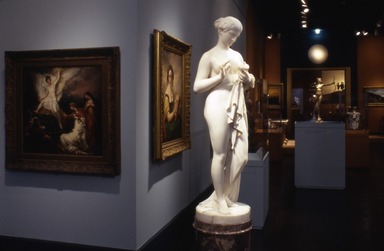
American Identities: A New Look, September 12, 2001 through February 28, 2016 (Image: PSC_E2001i190.jpg Brooklyn Museum photograph, 2006)

American Identities: A New Look, September 12, 2001 through February 28, 2016 (Image: PSC_E2001i191.jpg Brooklyn Museum photograph, 2006)

American Identities: A New Look, September 12, 2001 through February 28, 2016 (Image: PSC_E2001i192.jpg Brooklyn Museum photograph, 2006)

American Identities: A New Look, September 12, 2001 through February 28, 2016 (Image: PSC_E2001i193.jpg Brooklyn Museum photograph, 2006)

American Identities: A New Look, September 12, 2001 through February 28, 2016 (Image: PSC_E2001i194.jpg Brooklyn Museum photograph, 2006)

American Identities: A New Look, September 12, 2001 through February 28, 2016 (Image: PSC_E2001i195.jpg Brooklyn Museum photograph, 2006)
American Identities: A New Look
-
American Identities: A New Look
Welcome to the Brooklyn Museum of Art's collections of American art. Installed in the circuit of galleries you have just entered are nearly three hundred fifty objects representing a portion of the Museum's world-class collections of American painting, sculpture, decorative arts (including furniture, ceramics, silver, glass, and baskets), prints, and photographs. In a museum of this size and universal scope, it is unusual to find an installation that integrates so many different object types. It has been the goal of the organizing Museum team (curators, educators, and designer) to use this wide array of objects to tell as rich and layered a story as possible about life and culture in the United States from the colonial period to the present. In an effort to broaden conventional notions of what constitutes "American" art, we have also included Native American objects, as well as fine and decorative arts of the Spanish colonial era in Mexico and South America from the Museum's equally stellar collections in those areas.
The galleries are organized around a framework of eight themes—some based on time periods and others based on more general subjects—inspired by the strengths of the American collections. We have used a lively sequence of colors to signal the boundaries of each thematic section, as well as to present these works of art in a new light. You may want to seek out the large text panels introducing the themes before beginning your viewing in each gallery. Many individual objects also have text labels written by the Museum's curators. And you will find additional "voices" in the galleries, in labels that offer other perspectives through the words of artists, writers, historical figures, and members of the Museum's diverse Brooklyn community today. -
Founding of the Collections
In 1824 a group of civic-minded Brooklyn residents established the Apprentices’ Library Association, the ancestor of the Brooklyn Museum of Art. Among the organizers was Augustus Graham (whose portrait is nearby), soon to become one of Brooklyn’s most active philanthropists and the person responsible for founding the Museum’s great collection of American art in 1851.
The BMA’s holdings of American paintings grew rapidly after the turn of the century, as its directors and curators unfailingly valued American art at a time when European art was generally considered superior. For decades this foresight inspired the purchase of important objects rarely obtainable today. The Museum trustee A. Augustus Healy (whose portrait also hangs here) orchestrated the famous purchase of John Singer Sargent’s watercolors in 1909. The painting collection enjoyed unprecedented growth from 1936 to 1952 during the curatorship of John I. H. Baur (also portrayed here), who acquired eighteenth and nineteenth-century works in advance of accepted taste.
The first American decorative arts objects—two silver teaspoons—entered the collection in 1902. The Department of Decorative Arts, first established as the Department of Colonial and Early American Furniture by the trustee Luke Vincent Lockwood in 1914, purchased the first period room the next year. By the late teens the department had begun to set trends with acquisitions in understudied areas, including antebellum American furniture. Curators in the department have carried on this tradition, building important holdings of Aesthetic Movement and Machine Age material.
The establishment of a Department of Ethnology in 1903 reflected the Museum’s intention to collect works from indigenous cultures. The department’s first curator, R. Stewart Culin, acquired thousands of Native American objects, many on Museum-sponsored expeditions. The BMA’s collection of Spanish colonial art was largely acquired in the 1940s and 1950s under the pioneering leadership of Culin’s successor, Herbert J. Spinden.
Today the American collections number more than sixty-three thousand objects ranging in date from the 1600s to the present. They constitute one of the great public collections in the field and make possible the telling of many stories about American culture and creative life. Selected objects from all of these rich collections are displayed together for the first time here, demonstrating the ongoing evolution of the BMA’s historical mission to collect and present American art for new audiences. -
From Colony to Nation: The Colonial Period
The objects in this gallery once ornamented colonial interiors throughout the Americas from the late 1600s to 1776. For North American colonists, who were largely middle class, acquiring luxury items was one way of raising their social status in their self-made societies. Their view of the relative value of fine objects may be different from ours: silver (made literally out of money) ranked highest, followed by textiles (the finest of which were imported), large case furniture, paintings and frames, and, finally, ceramics and glass.
Most of the luxury objects made in the North American colonies were modeled on European examples and were executed by artisans who were self-taught or had some very basic training in their country of origin. As colonial wealth and the demand for fine items dramatically increased in North America after about 1750 (particularly in centers like Boston and Philadelphia), a new generation of artists and makers—both native-born and foreign—substantially raised the quality and quantity of colonial art production.
In contemporaneous Spanish colonial societies in Mexico and South America, also represented in this gallery, the Catholic Church played a major role in establishing guilds to create art and furnishings for elaborate churches and homes. The productions of these guilds were shaped in part by the arts of native peoples, in a convergence of European and native cultures that was not paralleled in the North American colonies. The Zuni water jar on view here, created at the same moment as many of the European-derived portraits and furnishings in the gallery, serves as a reminder of the independent continuity of Indian artistic traditions in North America throughout the colonial period. -
From Colony to Nation: Symbols of the Early Republic
The United States achieved political independence from Great Britain in 1783 and elected George Washington as the nation’s first president in 1789. Citizens of this new democratic republic were highly self-conscious about the radical nature of their experiment in government. What form would the now-independent nation take? In composing the Constitution, the Founding Fathers were inspired by classical principles of reason and the perceived virtue of classical Greek and Roman culture. Classical art accordingly was adopted as the appropriate style for the new nation that considered itself heir to those original democracies. Greek and Roman imagery were embraced as powerful symbols of national identity and reminders of civic duty.
By the early nineteenth century, almost every aspect of American visual culture—architecture, fine arts, interior decoration, and fashion—was affected by classical models. Classical artistic vocabulary includes pediments, columns, arches, volutes, wreaths, and garlands, and can be observed in many of the objects in this gallery. -
Inventing American Landscape
American Scenery . . . is a subject that to every American ought to be of surpassing interest; for, whether he beholds the Hudson mingling waters with the Atlantic—explores the central wilds of this vast continent, or stands on the margin of the distant Oregon, he is still in the midst of American scenery—it is his own land.
—Thomas Cole, “Essay on American Scenery” (1836)
In the early nineteenth century, Americans in search of national and cultural identity increasingly turned to the natural grandeur of North American scenery. Landmarks in the East and then in the Far West were celebrated in literature and poetry, represented in paintings and prints, and even reproduced on dinnerware and furniture. These sites became powerful symbols of American history and culture, invested with national resonance as well as with religious associations. They also motivated a booming tourism industry, which posed a conflict between the preservation of unspoiled wilderness and the national mandate for progress. The tensions embodied in this set of opposing values still pervade American thought and attitudes to nature today. The landscape style known as the Hudson River school—with its panoramic vistas, deep space, deft atmospheric effects, and precise details—predominated from the 1820s to the 1860s. After the Civil War, different styles and approaches emerged. More intimate, freely brushed landscape subjects, substituting poetry of mood for a specific sense of place, became increasingly fashionable. French landscape painting strongly influenced both patrons and painters—first, with the freer brushwork and more subdued colors of the Barbizon school, and later with the brilliant palette of Impressionism.
The abstract styles introduced in the early twentieth century were also applied to the portrayal of American landscape. The subject continued to hold profound meaning during times of great artistic experimentation in the second half of the century. Celebrated in works ranging from meticulously realistic to barely recognizable in terms of location or subject, the American landscape remains an essential inspiration for subsequent artistic generations. -
Everyday Life: Looking Inside
To “look inside” something suggests that we seek to discover the contents of an enclosed space—a box, a house, a person’s private thoughts. All of the works on view in this area—genre subjects, still lifes, portraits, and household objects—tempt us to look inside to find evidence of national and artistic ideals expressed in the nonpublic realms of home, studio, and thought.
In the mid-nineteenth century, American artists gave increasing attention to depicting domestic interiors where people, imagined or real, lived. Then, as now, houses revealed the taste, status, and values of their occupants. Yet by portraying these private interiors in paintings that were destined for public exhibition, artists opened rather than restricted access to the spaces they pictured. Thus, these paintings are not simple reports of observable reality. They express a point of view, but whose? The artist’s? The patron’s? A critic’s? Or did some artists cater to what they perceived as the taste of the majority of their audience?
Portraits, in addition to conveying likenesses of specific people, often compel us to think about emotional or psychological interiors. The portraits in these galleries tell us about family kinship and public identities, and frequently convey values concerning parental duty and the sanctity of home. Still lifes are also included here. These arrangements—whether mundane pieces of laundry strewn across a floor or a gloriously extravagant collection of fruits and flowers—register as selected or composed interior views that spark the imagination into considering the domestic spaces they occupy. -
Everyday Life: Looking Outside
I ask not for the great, the remote, the romantic; what is doing in Italy or Arabia. . . . I embrace the common, I explore and sit at the feet of the familiar, the low. Give me insight into to-day, and you may have the antique and future worlds.
—Ralph Waldo Emerson, The American Scholar (1837)
Emerson’s appeal for a vital national culture rooted in direct perceptions of present-day American life has been called an intellectual declaration of independence. Many felt that this goal could best be realized in the visual arts through genre subjects, where artists characterized the daily life of ordinary people. The early genre works exhibited here spin out sentimental, humorous, and often nostalgic narratives in outdoor settings that would have been familiar to contemporary audiences.
The paintings often depict unique “American” characters: the Yankee, the westerner, and the yeoman farmer. These national stereotypes, with specific regional, racial, or ethnic attributes, appeared in the theater, in literature, and in popular culture, and carried a variety of social and political messages. Idealized rural life was often presented as a beneficial contrast to congested cities. For an urban audience, genre paintings often embodied more than just popular nostalgia for youth and simpler times. These subjects also affirmed the rise in social and economic status of city patrons by evoking their less cosmopolitan origins.
American lifestyles have continued to fascinate and preoccupy artists as they have undergone dramatic redefinition over the course of the twentieth century and into the present. As was the case for many of the genre painters of the nineteenth century, humor and hyperbole often serve modern and contemporary artists who consider or question the customs of this country. -
A Nation Divided: The Civil War Era
Dramatically few American artists undertook the challenge of representing the Civil War. The majority, unwilling or unequipped to confront the physical destruction, loss of life, and psychological trauma of the war years from 1861 to 1865, continued to record the American landscape and home life for an audience in moral disarray and seeking reassurance that their former way of life and notion of nationhood might survive. It fell to photographers and illustrators to document the brutal facts of current events. The burning issue of slavery also remained virtually untouched by artists, with such exceptions as the painter Eastman Johnson, who attempted throughout the war to refashion the popular image of African Americans into one that was individualized, sympathetic, and supportive of the anti-slavery cause.
The works on view in this gallery demonstrate the ways in which American artists referred to the Civil War and its causes without picturing them directly. With few exceptions, the works created during the course of the war refer to the conflict symbolically, whereas those created in its aftermath (particularly from the war’s end to the turn of the century) were part of a virtual industry devoted to memorializing the Union cause and its heroes and heroines. It remained for artists of the twentieth century to fully confront the violent injustices that continued to divide the nation long after the war had ended. -
Expanding Horizons: New Subjects and Styles
We are a composite people. Our knowledge is eclectic. . . . It remains, then, for us to be as eclectic in our art as in the rest of our civilization.
—James Jackson Jarves, The Art Idea (1864)
Is it important for American art to have a distinct national identity? James Jackson Jarves, a critic and collector, was not alone in his belief that the arts in the United States would fail to thrive if the nation’s artists worked in isolation. This view reflected practical as well as idealistic considerations. European art was still in far greater demand on the American market, and Americans had no hope of competing with their foreign rivals unless they could match them aesthetically and technically.
With travel restrictions lifted at the close of the Civil War in 1865, a new generation of American artists began to look farther afield for subjects and training. Throughout the 1870s and 1880s, American students gravitated to the art capitals of Paris, Munich, and London, where they received rigorous academic training and experienced the tremendous changes taking place in contemporary European art. Many found new painting grounds throughout the Continent, and others embraced the vogue for exotic subject matter, traveling to the Near and Far East.
As the works in this section demonstrate, the results of foreign experience were varied, and in that sense, Jarves’s call for eclecticism was fulfilled. Nationality remained a source of pride, but for many American artists, it was no longer considered central to the work; rather, they sought to participate competitively in the international arena. -
Making Art: Plain Styles
Plain style is a new expression proposed as an alternative for terms such as primitive, naïve, outsider, and folk art to describe the paintings, sculpture, and decorative and utilitarian objects exhibited in this section.
While the unschooled artists and makers of “plain” objects sometimes employed the stylistic conventions and techniques of formally trained art-makers, they often misunderstood rules or modified them to suit their own abilities or visions. Because of this, their efforts produced art that is like the work in other sections of these galleries, but simpler. They are plain versions of what in other cases may be very elaborate or complex. While these works may be lacking in a certain technical sophistication, it has long been recognized that such simplicity has a power and appeal of its own. Collectors, scholars, and critics in the earlier twentieth century often associated this plainness with a set of ideal American social and moral values such as homeliness, sincerity, and independence. Others have interpreted the clarity, boldness, and distinct surface patterns of these works as forerunners of the pared-down forms of modernism. -
Making Art: The Academic Figure
All of the artists represented in this area attended art academies—either in the United States or Europe. “Academic” describes works that have been made according to rules taught in such schools. For much of the seventeenth, eighteenth, and nineteenth centuries, academic training encouraged official styles, ensured visibility in annual exhibitions, and offered access to lucrative patronage.
Academic teaching placed the art of the ancient Greeks as the standard to which artists should aspire. Holding mankind as “the measure of all things,” the Greeks saw the perfectly proportioned human form as a metaphor for such intangible qualities as intellect, nobility, discipline, and dignity. In the hierarchy of subject matter that developed in the academies, religious and history subjects, which depicted human activity, were the most exalted genres. Art students were taught at the outset that if they were to have successful careers, they needed to be proficient in representing the nude figure, and they spent much of their early training drawing from plaster casts of Greek and Roman classical sculptures.
The first successful art academies in the United States were founded in the early decades of the nineteenth century. Two of them—the National Academy of Design in New York and the Pennsylvania Academy of the Fine Arts in Philadelphia—still flourish. The once-unassailable power of those institutions was challenged in the United States starting in the 1870s, when artists began to establish alternative, independent exhibiting organizations and schools such as the Art Students League with less rigid teaching methods. Since then, the history of American art has been punctuated by tensions between artists who pursue academic values and those who reject them. -
The Centennial Era, 1876-1900: Tradition and Innovation
The one-hundredth anniversary of the United States in 1876 initiated a period of intensive national self examination and redefinition orchestrated by the country’s political, economic, and cultural leaders. Seeking to leave behind the trauma of the Civil War and Reconstruction, these individuals initiated an effort to reaffirm the early symbols of American nationhood and assert the rise of a country looking beyond its own borders.
This renewal effort was celebrated and promoted through a series of massive cultural fairs. The first was the Philadelphia Centennial exhibition of 1876, a stage set for the presentation of American progress in production, technology, and culture. Huge displays of national resources and new inventions raised the nation’s profile in the field of world trade, while artifacts of the Native American and colonial past were juxtaposed with works of living artists to suggest national progress toward a predestined apogee of Western culture.
Fine and decorative arts of this period were wildly varied and sometimes confusing, as artists chose between past traditions or present realities, revival styles or progressive forms. This diversity is demonstrated by the works in these Centennial Era galleries: paintings ranging from colonial subjects to modern urban views; furniture running the gamut from historical revival styles to the machine-made; and objects as different as machined glass and silver, and Native American crafts. This remarkable pluralism predominated through the turn of the century, until it was overtaken by the forces of modernism. -
The Centennial Era , 1876–1900: First Americans
The opening of the 1876 Centennial exhibition in Philadelphia coincided with an event that intensified the tide of white opinion against the Native American population for decades to come: the fatal defeat of General George Custer and his troops at the Little Bighorn River following their unprovoked attack on a sacred Sioux precinct. During the era of severe repression of Indian populations that followed, white portrayals of Native Americans became dreamily ideal or solemnly heroic—visual celebrations that cast American Indians as symbols of a securely distant, and hence unthreatening, past. At this moment when carefully documented Native American dress and artifacts were employed to lend these paintings and sculptures authenticity, the reality was that Indians were being forced to abandon their traditional activities and rituals for the routine of reservation life.
The white perspective was enacted in the Centennial fair itself, as in other massive expositions of the period. While only a handful of Native Americans were permitted to leave the reservations to visit the Centennial exhibition, a substantial “scientific” display of Indian artifacts was framed for a white audience as a glimpse of “nearly extinct” indigenous cultures. Such fair displays ironically helped to stimulate a market for certain handcrafted Native American objects, including baskets, pottery, rugs, and jewelry. Within this market controlled primarily by white ethnologists and entrepreneurs (some more interested than others in preserving Native American ways), Indians embraced the opportunity to revive and perpetuate traditional artistic methods and designs, and produced objects for tourists, collectors, and department stores hungry for rare and authentic decorative goods. -
Modern Life: Technology and the City
Modernity is often associated with rapid technological innovations that change society radically. At the beginning of the twentieth century, the awareness of modernity was exceptionally strong in cities, in large part because electricity, telephones, and the machinery of industry were coming into widespread use and transforming the patterns of people’s daily lives. Skyscrapers, made possible by the invention of the elevator, were perhaps the most visible signs of such changes, but modernity also encompassed the movement of people.
From the turn of the century, rural Americans relocated to urban economic and industrial centers, and thousands of immigrants arrived through the Port of New York to start new lives. This convergence of people having different customs, languages, and beliefs was dynamic, but not without friction. In that urban context, to be modern was to experience an unsettling mix of excitement and anxiety, for predictability based on past experience was exchanged for an often-perplexing present. For these reasons and others, cities—especially New York— became identified with modernity.
Most of the works displayed in this area concentrate on New York scenes and interpret the city according to each artist’s time and aesthetic point of view. Whether they focus on people, construction sites, theatrical performances, or the beauty of avenue traffic cloaked in gently falling snow, they momentarily halt the rapid alterations of the urban landscape, as if to make sense of a changing world before it is transformed yet again into something new. -
Modern Life: Nonobjective Art
At the beginning of the twentieth century, artists began to question vigorously the purpose and nature of art. Many avant-garde (progressive or experimental) artists rejected traditional ways of representation out of the belief that conveying meaning through clearly identifiable subjects or objects in illusionistic, three dimensional space was too limiting. Instead, they relied on the basic formal elements of art—for instance, line, shape, and color—to create compositions that had no obvious relationship to the observable world.
Nonobjective imagery served a number of purposes. It enabled some artists to express abstract, universal concepts (love, war, music, spirit, energy) in a visual language based on color associations or the relationships of shape and line. In contrast, other artists believed that the subject matter of art should be limited to art itself and purposely confined their work to analyzing visual elements to discover their purest forms.
Experimentation with nonobjective imagery started in Europe and gradually spread to the United States, where its greatest influence was felt in New York. Americans who had not witnessed the aesthetic revolution taking place in Europe could see avant-garde art and discuss theory in the small New York gallery of the photographer-dealer Alfred Stieglitz. In 1913 the controversial Armory Show opened in New York, introducing contemporary avant-garde European art to a broad segment of the American public and drawing firm battle lines between traditional and avant-garde tastes that still exist today. -
Modern Life: Art After 1945
Putting the recent past into perspective is a difficult task. Art historians have generally set the year 1945 as the date that separates historic from contemporary art. While some argue that this arbitrarily selected point in time is due for revision, there is a logic behind its continued use. The year 1945 marked the close of World War II—an event that suddenly thrust the United States into a position of political, economic, and cultural predominance over a war-ravaged Europe. This was the beginning of the atomic age and the Cold War—a perplexing era characterized by both a booming economy and an overwhelming sense of uncertainty.
Amid these contradictory moods, young American artists experimented with the achievements of pioneering European modernists and sought to move beyond them to create new visual languages. With the ascendancy of the intuitive, gestural style of Abstract Expressionism by the late 1950s, New York became the center of the international art world, and American artists the trendsetters. Building on this powerful momentum, artists and designers of the 1960s created the pure forms and evocative restraint of Minimalism.
The increasing rapidity of social, political, economic, and technological change throughout the remainder of the century found parallels in an art world that was equally destabilized and unpredictable. Pluralism, indeed, was the dominant mode of the 1970s, and the subsequent decades have brought about an even richer diversity as artists have explored issues of race and gender with new force. The post-1945 works on view here reveal a wide array of formal approaches and themes, and demonstrate the individualism, independence, and innovation that have been the hallmarks of American art production for the past fifty years.
-
May 7, 2001
To expand and enhance the visitor’s experience of American art, the Brooklyn Museum of Art has undertaken a major reinstallation of its American art holdings, considered one of the great collections of its kind in the world. The new presentation will integrate, for the first time, important objects from the Museum’s exceptional collections of paintings and sculpture, decorative arts, Spanish colonial art, and Native American material. American Identities: A Reinterpretation of American Art at the BMA, which will go on long-term view on September 7, is the first phase in creating the Luce Center for American Art. It will be followed in 2002 with a new public study center adjacent to the existing galleries that will make available to the public an additional 3,000 objects.
American Identities will be installed in 12,000 square feet of gallery space on the fifth floor of the Museum’s East Wing [and] will include nearly two hundred paintings, sculptures, and works on paper ranging from colonial portraits to distinguished works by artists such as John Singleton Copley, Thomas Cole, Albert Bierstadt, Thomas Eakins, Childe Hassam, and John Singer Sargent, to twentieth-century paintings by Stuart Davis, Ad Reinhardt, Richard Diebenkorn, Barbara Kruger, and others. These works will be complemented by more than 125 related holdings representing the depth and quality of the Museum’s Decorative Arts collections, among them furniture, ceramics, silver, Tiffany objects, textiles, Spanish colonial material, and Native American objects.
The installation of American Identities: A Reinterpretation of American Art at the BMA will be thematic and intended to present the concerns of daily life as expressed and reflected in works of art. It will also include contemporaneous photographs; and four film and video stations throughout the galleries, where short period films related to the themes will play on a continuous loop. Text panels will explore each of the themes and for the first time, descriptive labels will accompany many of the individual works, as well as statements from “new voices” such as artists and members of the Museum’s community, and commentary from period literature. Highlights from the collection will also be included in an audio tour of the entire permanent collection that is planned for the near future.
The new presentation will begin with an Orientation Section that will include Asher B. Durand’s The First Harvest in the Wilderness; Francis Guy’s Winter Scene in Brooklyn, which illustrates Brooklyn’s racial diversity in the early 19th century and was one of the first works to enter the collection; Georgia O’Keeffe’s rendering of the Brooklyn Bridge; and a basket made by the last living Brooklyn Canarsie Indian.
From Colony to Nation will explore the transformation of colonial societies into an emerging nation in search of a symbolic and stylistic identity. Works on view will include portraits by painters such John Singleton Copley, Gilbert Stuart, and Charles Willson Peale, along with objects including an 18th-century silver tankard made in New York; a pair of early 19th-century Sevres vases adorned with portraits of John Adams and Thomas Jefferson, and a door and doorframe from a Brooklyn house, as well as Spanish colonial material.
Inventing American Landscape will deal with the development of the American tradition of landscape painting in the 19th century and its continuing role in expressing the national identity. Among the works in this section will be Albert Bierstadt’s monumental A Storm in the Rocky Mountains-Mount Rosalie and Thomas Cole’s A View of the Two Lakes Mountain House, Catskill Mountains Morning, along with such 20th-century works as Arthur B. Dove’s Flat Surfaces; Richard Diebenkorn’s non-objective Ocean Park No. 27; and Pat Steir’s Everlasting Waterfall.
Home Life, which will explore how Americans have defined their daily customs from the early Republic to the present, will include works such as George Caleb Bingham’s genre frontier landscape Shooting for the Beef; Eastman Johnson’s urban interior Not At Home; Larry Rivers’s July; and Florine Stettheimer’s evocation of ennui, Heat; a Herter Brothers Mantel from the Sloan Griswold House that has not been on view for a quarter century; along with 19th- and 20th[-]century still-life paintings; household objects and furniture; and works by women of the Arts and Crafts movement.
The visual culture of the Civil War is examined in A Nation Divided. Included will be Alexander Pope’s Emblems of the Civil War; Eastman Johnson’s Ride for Liberty; Hiram Powers’s master work in the history of American Neoclassical 1869 sculpture, The Greek Slave, which came to be interpreted as an expression of anti-slavery sentiments; and related contemporary works such as Melvyn Edwards’s Lynch Fragment.
Post Civil War expansion of American worldliness and the fascination with the exotic are dealt with in the section Crossing Borders. The new and energetic eclecticism in artistic styles and subjects will be represented by works such as Frederic Church’s Tropical Scenery; William Merritt Chase’s The Moorish Warrior; and Edwin Lord Weeks’s The Old Blue-Tiled Mosque Outside of Delhi, India; as well as by objects such as a chest of drawers in the Japanese style made of woven cane, bamboo, and brass, which was sold on Fulton Street in Brooklyn.
Art Making is an examination of the artistic process from folk art to academic figure styles and will include material as diverse as Edward Hicks’s The Peaceable Kingdom; the African American folk art sculptor William Edmondson’s Angel; Louise Bourgeois’s Decontractée; Gaston Lachaise’s monumental Standing Woman; Alex Katz’s Ann; the folk art Giraffe Head; a Kwakiutl male potlatch figure; and a side chair decorated with gold stenciled swans.
The Centennial Era, examining visual culture from the 1876 Centennial Exhibition in Philadelphia through the 1893 World’s Columbian Exposition in Chicago, will include George Inness’s Sunrise; Winslow Homer’s In the Mountains; Augustus Saint-Gaudens’s Amor Caritas; Cheyenne ledger book drawings; the Union Porcelain Works masterpiece, Century Vase, which was exhibited at the Philadelphia Centennial Exhibition and depicts icons such as bison heads and the American eagle; as well as Native American ceramics, clothing, and basketry.
Modern Life will focus on the transformation of American life and landscape through technology, urbanization, and successive waves of immigration. This evolution was manifested in representations of industry and cities, the introduction of a machine aesthetic, and new artistic methods and styles. Among the works in this section will be new interpretations of natural forces such as Adolph Gottlieb’s Premonition of Evil; Stuart Davis’s abstract master piece The Mellow Pad, which captures the movement of the jazz music he loved; Barbara Kruger’s Untitled (We Are Notifying You of a Change of Address); and objects such as Norman Bel Geddes’ Skyscraper Cocktail Set; a 1930s RCA Victor portable phonograph; and a Frank Lloyd Wright side chair.
This project will be organized by a team of BMA curators: Teresa A. Carbone (Project Director), Dr. Linda S. Ferber, Andrew W. Mellon Curator of American Art and Chair of the department of American Art; Dr. Barbara Dayer Gallati, Curator of American Painting and Sculpture; Dr. Barry Harwood, Curator of Decorative Arts; Charlotta Kotik, Curator of Contemporary Art; and Susan Kennedy Zeller, Assistant Curator of Arts of the Americas. Vice Director of Education Dr. Joel Hoffman will play a major role in the project. Matthew Yokobosky will design the reinstallation.
American Identities: A Reinterpretation of American Art at the BMA is supported by a generous grant from the Independence Community Foundation for the Museum’s project American Identities: Building Audiences for the Future. American Identities: A Reinterpretation of American Art at the BMA is the first phase in creating the Luce Center for American Art.
The Brooklyn Museum of Art is recognized as a leader in the acquisition, study, and exhibition of American art with a collection distinguished by its breadth, quality, and size comprising some 2,500 oil paintings, sculptures, watercolors, and pastels that range in date from 1720 to the late 20th century. Its exceptional holdings of decorative arts are considered among the finest in the United States. Its important collection of Native American material is one of only two on view in New York City.
View Original -
June 1, 2001
Continuing Exhibitions
Arts of Africa
Long-Term Installation
Leon Golub: Paintings, 1950–2000
Through August 19, 2001
Digital: Printmaking Now
June 22-September 2, 2001
Upcoming Exhibitions
My Reality: Contemporary Art and the Culture of Japanese Animation
July 28-October 7, 2001
American Identities: A Reinterpretation of American Art at the BMA
Opens September 5, 2001 (Long-Term Installation)
Wit and Wine: A New Look at Ancient Iranian Ceramics from the Arthur M. Sackler Foundation
September 7-December 30, 2001
Vital Forms: American Art and Design in the Atomic Age, 1940–1960
October 12, 2001-January 6, 2002
Eternal Egypt: Masterworks of Ancient Art from The British Museum
November 23, 2001-February 24, 2002
Star Wars: The Magic of Myth
April 5-July, 7 2002
Exposed: The Victorian Nude
September 2, 2002-January 5, 2003
The Last Expression: Art from Auschwitz
February 28-May 11, 2003
Great Expectations: John Singer Sargent Painting Children
September 19-November 30, 2003
Continuing Exhibitions
Arts of Africa
Long-Term Installation
(African Galleries, 1st floor)
More than twenty important objects, previously not on view, will be integrated into a major reinstallation of some 225 works from the Museum's exceptional holdings of African art. Although a wide selection from the hundreds of African cultures will be represented, the reinstallation is exceptionally strong in works from Central Africa, particularly those from the Kongo, Luba, and Kuba peoples of the Democratic Republic of the Congo. The majority of the items on display were created for religious or political ceremonial life, but the presentation will also include furniture, textiles, architectural fragments, household items, and objects of personal adornment.
Organization: The reinstallation has been organized by William C. Siegmann, Chair of the Department of the Arts of Africa and the Pacific Islands at the Brooklyn Museum of Art.
Leon Golub: Paintings, 1950-2000
Through August 19, 2001
(European Painting and Sculpture Galleries, 5th floor)
This exhibition examines the career of Leon Golub (b. 1922), dean of American political art, whose intense, gritty paintings examine the complexities of power. The artist's raw and expressive canvases span the second half of the twentieth century and explore issues of race, violence, war, and the human condition. The exhibition of some fifty-five works, many of which are mural-sized, includes such monumental paintings as Gigantomachy Il (1966), Vietnam II (1973), and the BMA's own Riot IV (1983). A selection of Golub's lesser-known political portraits and his recent paintings that consider mortality will also be included.
Organization: Leon Golub: Paintings, 1950-2000 was curated by Jon Bird, an independent, London-based curator, and organized by the Irish Museum of Modern Art in Dublin. Brooke Kamin Rapaport, Associate Curator in the Department of Contemporary Art, organized the presentation at the BMA.
Support: The BMA presentation is supported, in part, by the BMA's Barbara and Richard Debs Exhibition Fund. Additional support is provided by The Broad Art Foundation and Dr. and Mrs. Philip J. Kozinn. Educational activities are made possible by the Third Millennium Foundation.
Publication: Leon Golub: Echoes of the Real, with an essay by Jon Bird, includes more than 130 color plates and is published by Reaktion Books, Ltd., London.
Digital: Printmaking Now
June 22-September 2, 2001
(Morris A. and Meyer Schapiro Wing, 4th floor)
This installment of the Print National, a survey of important developments in the field of printmaking, will focus on the increasing use of computers in the printmaking process. The exhibition, one of the first to address this issue, will include traditionally printed works that have been manipulated digitally and works created entirely by computer.
Organization: This exhibition was organized by Marilyn Kushner, Curator of Prints and Drawings at the Brooklyn Museum of Art. Support: Digital: Printmaking Now is organized by the Brooklyn Museum of Art. The exhibition is made possible, in part, by the Lily Auchincloss Foundation, Inc., and the BMA's Prints and Photographs Council. Additional support is provided by Marc A. Schwartz, Seymour and Laura Schweber, and Philip and Alma Kalb, and The Fund—created by a gift from the Elizabeth Firestone Graham Foundation. Educational activities are supported by the Third Millennium Foundation. Media sponsors are Artbyte Magazine and Art on Paper.
Publication: A fully-illustrated color catalogue will be available.
Upcoming Exhibitions
My Reality: Contemporary Art and the Culture of Japanese Animation
July 28-October 7, 2001
Synergies between Japanese and American popular culture are explored in this showcase of photography, painting, sculpture, and video that investigates the influence of Japanese animation (anime) and techno-culture on art. Anime is incredibly versatile in its ability to comment on social and sexual mores, gender roles, and traditional values in the face of an increasingly alien future. The exhibition features work by Takashi Murakami, Mariko Mori, Paul McCarthy, and Charlie White, among others.
Organization: My Reality: Contemporary Art and the Culture of Japanese Animation was originally curated by Jeff Fleming, Senior Curator, and Susan Lubowsky Talbott, Director of the Des Moines Art Center. The exhibition is coordinated at the Brooklyn Museum of Art by Charlotta Kotik, Department Chair of Contemporary Art.
Support: Educational activities for the BMA's presentation are supported by the Third Millennium Foundation. Additional support provided by The Fund—created by a gift from the Elizabeth Firestone Graham Foundation.
Publication: An illustrated catalogue co-published by the Des Moines Art Center and Independent Curators International accompanies My Reality.
American Identities: A Reinterpretation of American Art at the BMA
September 5, 2001-Long Term
(Luce Center for American Art, 5th floor)
This reinstallation of approximately 350 works from the permanent collections will present an innovative thematic survey of American paintings, sculpture, and decorative arts from the early eighteenth century to the present. An orientation gallery will introduce the visitor to the scope of the collections, showcasing a number of icons in a Brooklyn context. The galleries will be organized in a general chronological fashion with richly interpreted installations devoted to such themes as Dutch New Yorkers, Shaping American Landscapes, The Civil War Era, Women's Worlds, Urban Experiences, and The Drive toward Abstraction.
Organization: This project is a collaboration among curators of American Paintings and Sculpture: Teresa A. Carbone, Project Director; Linda S. Ferber and Barbara Dayer Gallati; Decorative Arts: Kevin L. Stayton, Chair of Department of Decorative Arts, Barry R. Harwood; Contemporary Art: Charlotta Kotik; Arts of Americas: Susan Kennedy Zeller
Support: American Identities: A Reinterpretation of American Art at the BMA is supported by a generous grant from the Independence Community Foundation for the Museum's project American Identities: Building Audiences for the Future, and by the National Endowment for the Arts.
Wit and Wine: A New Look at Ancient Iranian Ceramics from the Arthur M. Sackler Foundation
September 7-December 30, 2001
(Robert E. Blum Gallery, 1st floor)
This exhibition comprises forty-five pottery vessels—most for holding or pouring wine—from ancient Iran, ranging in date from the fifth millennium B.C. to the third century A.D. Demonstrating the extraordinary range of Iranian pottery, the exhibition includes such whimsical examples as a juglike vessel in the shape of human feet, and sculptural works in the shape of camels and bulls. Some containers clearly imitate early metal prototypes, with their unusually thin walls and long spouts, while others are painted with sophisticated ornamental designs depicting the animals of the Iranian highland. The Brooklyn Museum of Art is the last scheduled venue for this traveling exhibition.
Organization: The exhibition has been organized by the Arthur M. Sackler Foundation and curated by Dr. Trudy S. Kawami. James F. Romano, Curator of Egyptian, Classical, and Ancient Middle Eastern Art at the BMA, will organize the presentation at the Brooklyn Museum of Art.
Vital Forms: American Art and Design in the Atomic Age, 1940-1960
October 5, 2001-January 6, 2002
(Grand Lobby, 1st floor; Morris A. and Meyer Schapiro Wing, 4th floor)
This interdisciplinary exhibition will present 250 of the most innovative works of the 1940s and 1950s that embraced a vocabulary of organic, or vital, forms. Through architecture, decorative and industrial arts, graphic design, painting, photography, and sculpture, Vital Forms will examine the use of nature-based imagery during the postwar era. The exhibition will show how this aesthetic development represented an affirmation of life in the face of the Cold War and at the dawn of the nuclear age. Exploring the organic visual language adopted by some of the era's most progressive creators, the exhibition will include works of art and design such as paintings by Willem de Kooning and Mark Rothko, the "Predicta" television set, images of Eero Saarinen's TWA Terminal at JFK International Airport, Tupperware, the "Slinky," and the Ford Thunderbird. Additionally, the exhibition will trace how that visual vocabulary was applied to objects of popular culture, such as Formica countertop laminate and paperback book covers. The exhibition is the third in a series organized by the BMA that began with The American Renaissance, 1876-1917 (1979) and continued with The Machine Age in America, 1918-1941 (1986).
Organization: This exhibition will be organized by Brooke Kamin Rapaport, Associate Curator of Contemporary Art, and Kevin Stayton, Department Head and Curator of Decorative Arts at the Brooklyn Museum of Art. Martin Filler and Mildred Friedman are consulting co-curators, and Dr. Paul Boyer is the project's cultural historian.
Publication: A full-color catalogue published by the Brooklyn Museum of Art and Harry N. Abrams, Inc., will accompany the exhibition.
Tour:
Brooklyn Museum of Art:
October 12, 2001-January 6, 2002
Walker Art Center:
February 16-May 12, 2002
Frist Center for the Visual Arts:
June 21-September 15, 2002
Los Angeles County Museum of Art:
November 17, 2002-February 23, 2003
Phoenix Art Museum:
April 4-June 29, 2003
Support: Vital Forms: American Art and Design in the Atomic Age, 1940-1960 was organized by the Brooklyn Museum of Art. The exhibition was made possible, in part, by generous grants from the National Endowment for the Humanities and the National Endowment for the Arts. Additional support was provided by the Mary Jean and Frank P. Smeal Foundation, The Samuel I. Newhouse Foundation, and the Gramercy Park Foundation. Support for the catalogue was provided through the generosity of Furthermore, the Publication Program of the J.M. Kaplan Fund, as well as a BMA publications endowment created by the Iris and B. Gerald Cantor Foundation and the Andrew W. Mellon Foundation.
Eternal Egypt: Masterworks of Ancient Art from The British Museum
November 23, 2001-February 24, 2002
(Beatrice and Samuel A. Seaver Gallery, 5th floor)
This exhibition will provide a unique opportunity to view more than 140 ancient Egyptian masterpieces from The British Museum in London, many of which have never before traveled to the United States. Many large-scale works will be presented, including the capital of a temple column with a monumental carving of the goddess Hathor, as well as a world-famous portrait statue of the great pharaoh Sesostris III, royal jewelry, and paintings on papyrus illustrating scenes from The Book of the Dead. The exhibition will span the entire pharaonic period, from Dynasty I (about 3100 B.C.) to the period of Roman rule (4th century A.D.).
Organization: This exhibition was organized by the American Federation of Arts and the British Museum, with guest curator Edna R. Russmann, Curator of Egyptian, Classical, and Ancient Middle Eastern Art at the Brooklyn Museum of Art, and W. V. Davies, the British Museum's Keeper of Egyptian Antiquities.
Support: This exhibition and its national tour are made possible by Ford Motor Company. The official hotel of the Brooklyn leg of exhibition is the New York Marriott Brooklyn. Promotional support for the BMA's presentation is provided by Bloomingdale's. Additional support has been provided by the Benefactors Circle of the AFA.
Publication: A fully illustrated catalogue accompanies this exhibition.
Star Wars: The Magic of Myth
April 5-July 7, 2002
(Morris A. and Meyer Schapiro Wing, 4th & 5th floors)
The exhibition showcases original artwork, props, models, costumes, and characters used to create the original Star Wars trilogy—Star Wars: A New Hope, The Empire Strikes Back, and Return of the Jedi—as well as Episode I: The Phantom Menace. Included will be over 30 mannequins, 35 models, and 50 pieces of framed artworks. Among them will be R2-D2, C-3P0, Darth Vader, Yoda, Boba Fett, and Yoda as well as Princess Leia's Slave Girl Costume, Han Solo frozen in carbonite, the Millennium Falcon, and one of Queen Amidala's royal gowns. Interpretive panels throughout the exhibition trace the mythological and literary sources that transform Star Wars into a timeless epic. Drawing upon the work of Joseph Campbell in his book The Hero with a Thousand Faces, the exhibition shows how the themes of the young hero, the faithful companions, the endangered maiden, the wise guide, and others resonate through the Star Wars saga and give it an enduring universality. The exhibition will include a 26-minute documentary film, which will play continuously, on the making of the Star Wars saga.
Organization: Star Wars: The Magic of Myth was developed by the Smithsonian's National Air and Space Museum. The exhibition was organized for travel by the Smithsonian Institution Traveling Exhibition Service (SITES). All artifacts in this exhibition are on loan from the archives of Lucasfilm Ltd. The Brooklyn Museum of Art will be the final stop of a national tour. Catalogue: An illustrated catalogue accompanies the exhibition, entitled Star Wars: The Magic of Myth, by Mary Henderson, exhibition curator from the National Air and Space Museum of the Smithsonian Institution.
Exposed: The Victorian Nude
September 2, 2002-January 5, 2003
(Schapiro Galleries, 4th floor)
The nude figure was one of the most controversial subjects in Victorian England. It fired the Victorian imagination as the central focus of arguments about aesthetics, morality, sexuality, and desire—issues that continue to provoke debate. Exposed: The Victorian Nude is the first exhibition to survey the full range of representations of the nude in Victorian art. While the exhibition concentrates mainly on the "high arts" of painting and sculpture, photography, popular illustrations, advertising, and caricature are included to demonstrate the prevalence of the nude in Victorian visual culture and the meaning it held.
Organization: Exposed: The Victorian Nude has been organized by Tate Britain. Barbara Dayer Gallati, Curator of American Paintings and Sculpture, will coordinate the presentation at the Brooklyn Museum of Art.
Publication: A fully illustrated catalogue will be available.
Tour: The Brooklyn Museum of Art will be the only North American stop of this exhibition tour.
The Adventures of Hamza
November 1, 2002-January 26, 2003
(Blum Gallery, 1st floor)
The Adventures of Hamza (or Hamzanama) is a fantastic adventure story about the exploits of Hamza, uncle of the Prophet Muhammad, who traveled throughout the world spreading the doctrines of Islam. The narrative tells of encounters with giants, demons, and dragons; of abductions and hair - raising chases; and of believers, as well as those who resisted Islam. A favorite story for illustration, it was also recited in coffeehouses from Iran to northern India. The greatest illustrated manuscript of the Hamzanama was made in India for the Mughal Emperor Akbar (reigned 1556-1605) when he was still a teenager. It originally contained 1,400 enormous illustrations, about a tenth of which have survived today. This exhibition brings together some 70 of these illustrations from collections all over the world, and places them alongside new translations of the related text passages. Organization: The Adventures of Hamza has been curated by Dr. John W. Seyller and organized by the Freer Gallery of Art and the Arthur M. Sackler Gallery, at the Smithsonian Institution. Amy G. Poster, Chair of the Asian Art Department at the Brooklyn Museum of Art, will coordinate the exhibition at the BMA.
Publication: A fully illustrated catalogue will accompany this exhibition.
Great Expectations: John Singer Sargent Painting Children
September 19-November 30, 2003
(Schapiro Galleries, 4th floor)
John Singer Sargent is best known for his portraits of society women. This exhibition will assemble some forty depictions of children by Sargent to present an unexpected and revealing examination of his art. Rather than presenting children in the saccharine, sentimentalized fashion of the day, Sargent often captured them in moments of sober contemplation. Portraying his young subjects as psychologically complex individuals, Sargent redefined children's portraiture, which typically treated childhood as a generic age of innocence.
Organization: This exhibition will be organized by Barbara Dayer Gallati, Curator of American Paintings and Sculpture, at the Brooklyn Museum of Art.
Publication: A fully illustrated color catalogue will accompany this exhibition.
The Last Expression: Art from Auschwitz
February 29-May 11, 2003
The Last Expression: Art from Auschwitz will feature two- and three-dimensional art produced by interned victims of Auschwitz and other camps. Artwork served different functions in the camps—catharsis, documentation, resistance, decoration, and official commissions. This exhibition will present the role of visual arts in concentration camps. The works of Jewish inmates, as well as that of resistance fighters from throughout Europe, will be included in this show.
Organization: The Last Expression: Art from Auschwitz will be organized by the Mary and Leigh Block Museum of Art at Northwestern University. Marilyn Kushner, Curator of Prints and Drawings, will be managing the project at the Brooklyn Museum of Art.
Brooklyn Museum Archives. Records of the Department of Public Information. Press releases, 1995 - 2003. 2001, 070-077
View Original




















